How do you divide 4 digit numbers?
Learn how to break down a calculation when dividing a 4-digit number by a 1-digit number.
Example 1
What is 6396 divided by 3?
In this example we will break down the calculation using place value counters.
The place value chart shows the number 6396. There are 6 thousands, 3 hundreds, 9 tens and 6 ones. To divide this by 3, look at the values in the individual columns.
6 thousands divided by 3 is 2 thousands, 3 hundreds divided by 3 is 1 hundred, 9 tens divided by 3 is 3 tens and 6 divided by 3 is 2 ones.
So 6396 ÷ 3 = 2132.
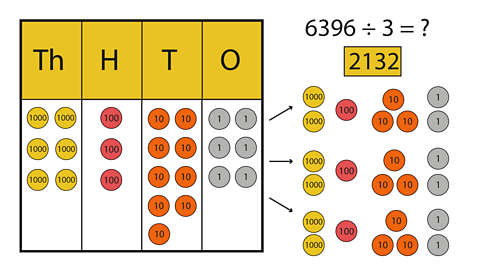
Image caption, Here is 6396 represented in a place value chart. There are 6 thousands, 3 hundreds, 9 tens and 6 ones. To divide the number, you separate the counters into 3 groups.
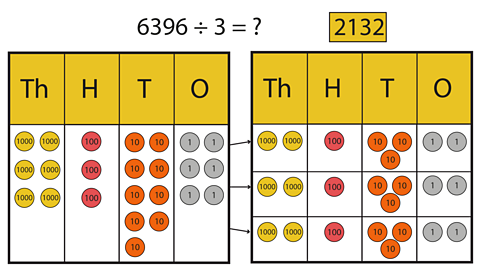
Image caption, If you divide the counters into 3 groups, 6 thousands divided by 3 is 2 thousands, 3 hundreds divided by 3 is 1 hundred, 9 tens divided by 3 is 3 tens and 6 divided by 3 is 2 ones. So 6396 ÷ 3 = 2132
1 of 2
Example 2
What is 1248 divided by 4?
This is dividing a 4 digit number by a 1 digit number, but without the place value counters.

Image caption, 12 hundreds divided by 4 is 300, four tens divided by 4 is 10, 8 divided by 4 is 2. 300 add 10 add 12 is 312.
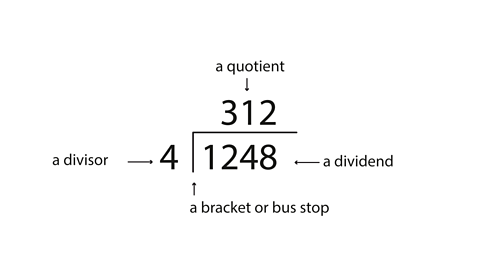
Image caption, Another way of representing this is with a bracket or bus stop. In division, we talk about the dividend (the number being divided) the divisor (the number we divide by) and the quotient (the result of the division.) Notice how the digits of the dividend and quotient are ‘lined-up’ with this working out, just as we would always do with column addition and subtraction!
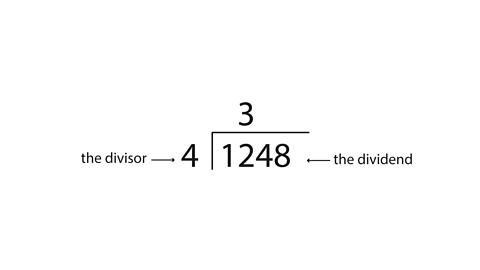
Image caption, To begin the division, we divide the first number of the dividend by the divisor. 1 cannot be divided so you divide 12 by 4, which equals 3.
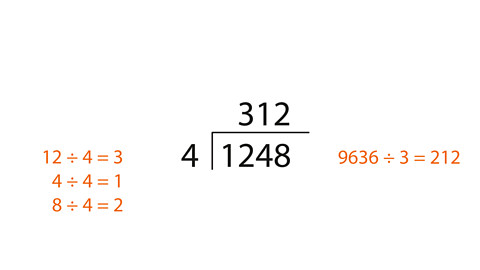
Image caption, We repeat this for each dividend.
1 of 4
Example 3
What is 7580 divided by 5?
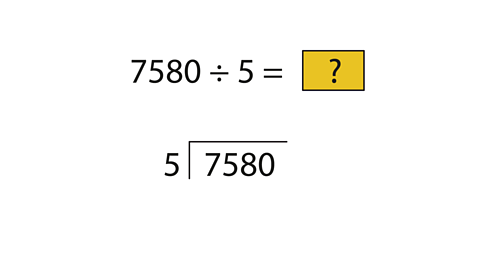
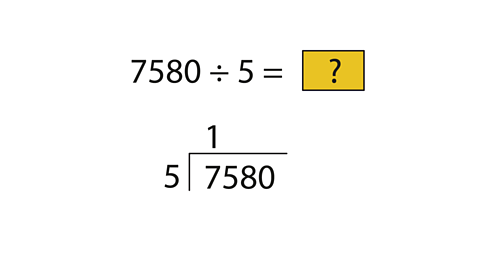
Image caption, 5 divided into 7 (thousands) goes once.
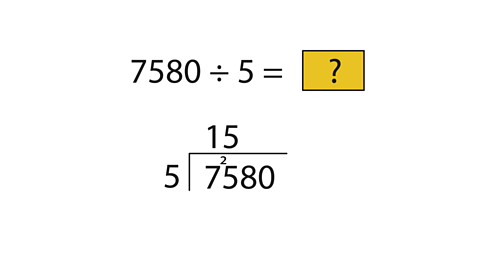
Image caption, 5 divided into 7 (thousands) goes once (one thousand) and 2 (thousands) left over.
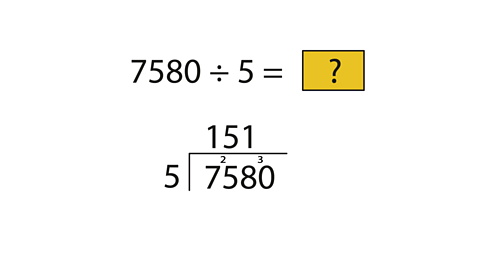
Image caption, 5 divided into 25 (hundreds) goes exactly 5 (hundreds) – no remainder.
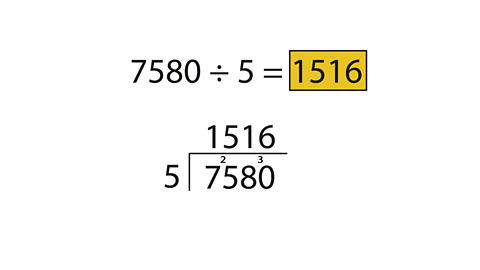
Image caption, 5 divided into 8 (tenths) goes once with 3 left over and 30 (ones) goes exactly 6 (ones) – no remainder.
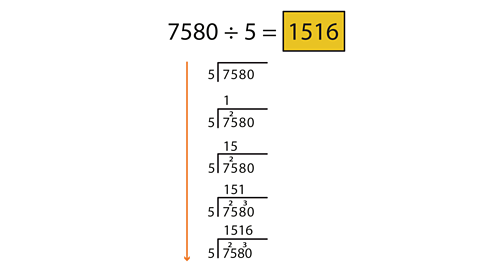
Image caption, Here is the calculation in full.
1 of 6
Example 4
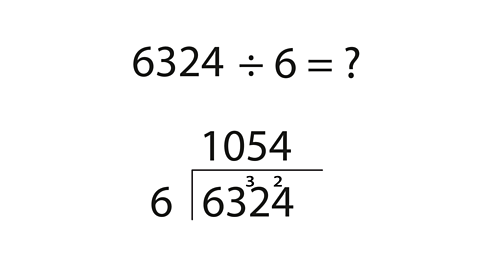
What is 6324 divided by 6?
6 divided into 6 (thousands) goes exactly once – no remainder.
6 cannot be divided into 3 – there is not even one six in three! So just move the 3 (hundreds) to make 32 (tens).
6 divided into 32 (tens) goes 5 (tens) and 2 (tens) left over.
6 divided into 24 (ones) goes exactly 4 (ones) – no remainder.

Activities
Activity 1
The Greatest Remainder
The aim of this game is to be the player with the greatest remainder at the end! Take it in turn to roll a dice. Write down your number each time. Roll the dice four times each so that you each have a 4-digit number, such as 2396.
Now that each of you has a 4-digit number, each player chooses a number between 3 and 9. Divide your 4-digit number by this number.
The player with the greatest remainder wins, as long as their calculation is correct!
Extension: Play the game again. This time, the aim is to be the player with the smallest remainder. How will this affect how you play?
Quiz 1
Quiz 2
Now test your knowledge with this quiz.
Play Guardians: Defenders of Mathematica to get ready for SATs. gamePlay Guardians: Defenders of Mathematica to get ready for SATs.
In this game, use the times tables and more maths skills to defeat monsters and reclaim the Kingdom.

More on Multiplying and dividing
Find out more by working through a topic
- count30 of 34
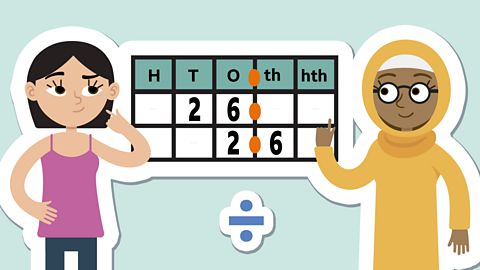
- count31 of 34
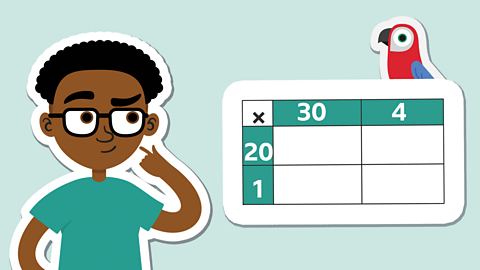
- count32 of 34
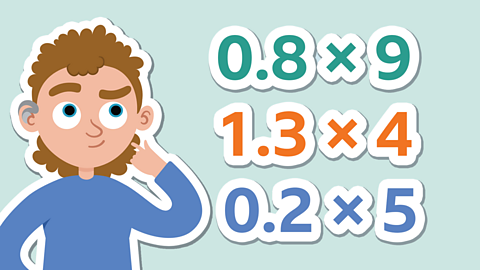
- count33 of 34
